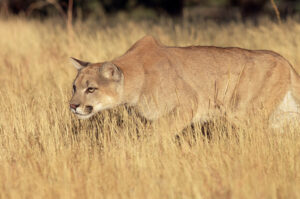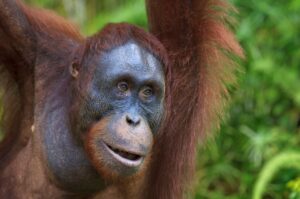New research suggests that the reindeers’ flexible diet might save the entire species. That’s because a warming planet has not only melted ice and tundra — it’s also supporting more plant growth in Norway’s Svalbard archipelago.
The region’s reindeer population seem to have adapted to this change, shifting their diet to “popsicle-like” grasses, according to a study published in Global Change Biology this past fall.
By feeding on these grasses poking through the ice and snow, the Svalbard reindeer have more time to build up fat reserves, the study said. They’re a bit smaller than more southerly reindeer/caribou species, yet have lived for thousands of years in Svalbard, just 800 kilometers from the North Pole.
The species’ ability to adapt to their changing environment provides a stark contrast with other reindeer species in Canada, Alaska, and Russia. In those regions, populations have declined, as a rapidly changing environment makes finding food more difficult.
Biologists believed that the same thing would happen in Svalbard, yet the Norwegian sub-species surprised them.

A Svalbard reindeer in summer. Photo: Shutterstock
Deadly freezing rain
As climate change warms the planet, polar inhabitants are often seen as canaries in the proverbial coal mine.
And like many other natives of the polar regions, reindeer (known as caribou in North America) have experienced difficulties adapting to a warming planet.
Arctic regions around the world have experienced thicker snowfall and increasing rain. Sometimes, freezing rain coats the ground with an impenetrable glaze, and winter sets in before it has time to melt. Then reindeer can’t dig for lichen, their preferred food, and starve.
This happened in Russia last year when up to 80,000 reindeer perished. The freezing rains also affected many reindeer in Norway, where one official called it “a serious crisis.” It has also happened in the Canadian High Arctic several times since the 1970s, at times killing 90 percent of local caribou and muskoxen.
Ver esta publicación en Instagram
Such events led researchers in 2020 to suggest that muskoxen face “an uncertain future”.
So the news of Svalbard reindeer finding new ways to survive is “definitely encouraging,” Jaakko Putkonen, a professor at the University of North Dakota, told The Guardian.
Putkonen’s own research had accurately predicted that increased arctic rain could have disastrous consequences. The scientist also pointed to the complexity of the reindeer’s situation.
“Some of the upcoming changes may be good to the reindeer and some may be detrimental,” Putkonen said. “For example, from Scandinavia, there are reports of rain on snow promoting the growth of fungi [which can be toxic] under the snowpack due to warmer conditions, which has led the reindeer to avoid those areas. They may be trading one challenge for another one.”





